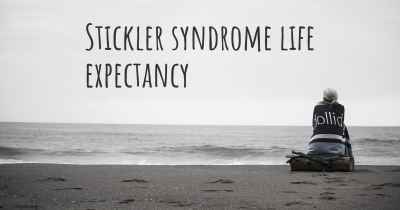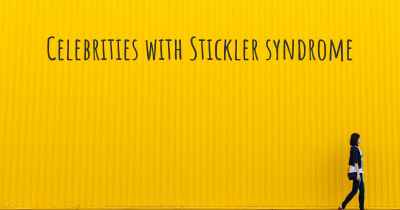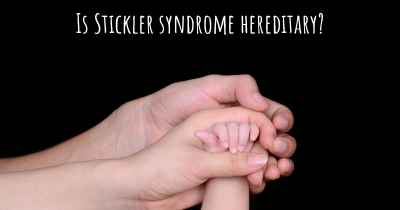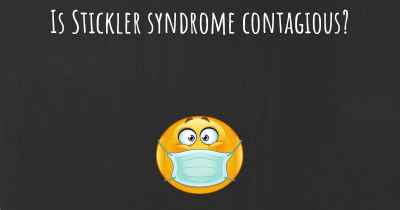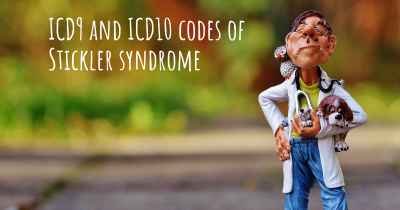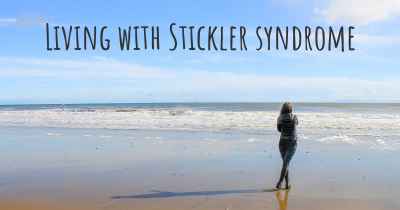What is the history of Stickler syndrome?
When was Stickler syndrome discovered? What is the story of this discovery? Was it coincidence or not?

Stickler syndrome is a rare genetic disorder that affects the connective tissues in the body. It was first described by Dr. Gunnar B. Stickler in 1965, hence the name. Stickler syndrome is characterized by a range of symptoms that primarily affect the eyes, ears, joints, and facial features.
The discovery of Stickler syndrome:
In the 1960s, Dr. Gunnar B. Stickler, an American ophthalmologist, began noticing a pattern of symptoms in some of his patients. These symptoms included a specific type of myopia (nearsightedness), cataracts, retinal detachment, hearing loss, and facial abnormalities. Dr. Stickler suspected that these symptoms were related and conducted further research to understand the underlying cause.
Identification of genetic mutations:
After years of research, Dr. Stickler and his colleagues identified genetic mutations as the cause of Stickler syndrome. They discovered that mutations in several genes, including COL2A1, COL11A1, COL11A2, and COL9A1, were responsible for the disorder. These genes provide instructions for producing proteins that are essential for the development and maintenance of connective tissues.
Classification of Stickler syndrome:
Stickler syndrome is classified into different types based on the specific gene mutations involved. The most common type is Stickler syndrome type 1, which is caused by mutations in the COL2A1 gene. This type is characterized by severe myopia, retinal detachment, hearing loss, and joint problems. Other types, such as Stickler syndrome type 2 and type 3, are caused by mutations in different genes and may have varying symptoms.
Prevalence and inheritance:
Stickler syndrome is considered a rare disorder, with an estimated prevalence of 1 in 7,500 to 1 in 9,000 individuals. It is inherited in an autosomal dominant pattern, which means that a person only needs to inherit one copy of the mutated gene from either parent to develop the syndrome. However, in some cases, Stickler syndrome can also occur due to spontaneous genetic mutations.
Signs and symptoms:
The signs and symptoms of Stickler syndrome can vary widely among affected individuals, even within the same family. The most common features include:
- Ocular abnormalities: These may include myopia, cataracts, glaucoma, retinal detachment, and a distinctive flatness of the face.
- Hearing loss: Sensorineural hearing loss is a common symptom, which can range from mild to severe.
- Joint problems: Affected individuals may experience joint pain, stiffness, and early-onset osteoarthritis.
- Facial abnormalities: Some individuals with Stickler syndrome may have a cleft palate, small chin, or a flattened bridge of the nose.
Diagnosis and management:
Diagnosing Stickler syndrome involves a combination of clinical evaluation, genetic testing, and imaging studies. Genetic testing can identify the specific gene mutations responsible for the syndrome. Early diagnosis is crucial for appropriate management and treatment.
There is currently no cure for Stickler syndrome, but treatment focuses on managing the symptoms and preventing complications. This may include regular eye examinations, hearing aids or cochlear implants for hearing loss, physical therapy for joint problems, and speech therapy for speech and feeding difficulties associated with cleft palate.
Research and future prospects:
Ongoing research is aimed at better understanding the underlying mechanisms of Stickler syndrome and developing potential therapies. Gene therapy and other innovative approaches hold promise for the future treatment of this rare disorder.
In conclusion, Stickler syndrome is a rare genetic disorder that was first described by Dr. Gunnar B. Stickler in 1965. It is caused by mutations in several genes involved in connective tissue development. The syndrome is characterized by a range of symptoms affecting the eyes, ears, joints, and facial features. Early diagnosis and appropriate management are essential for individuals with Stickler syndrome to lead fulfilling lives.
It was discovered because he saw a group of symptoms occurring in a family he met while treating a child at a pediatric specialty clinic.
Posted Jan 19, 2018 by Anna 300
